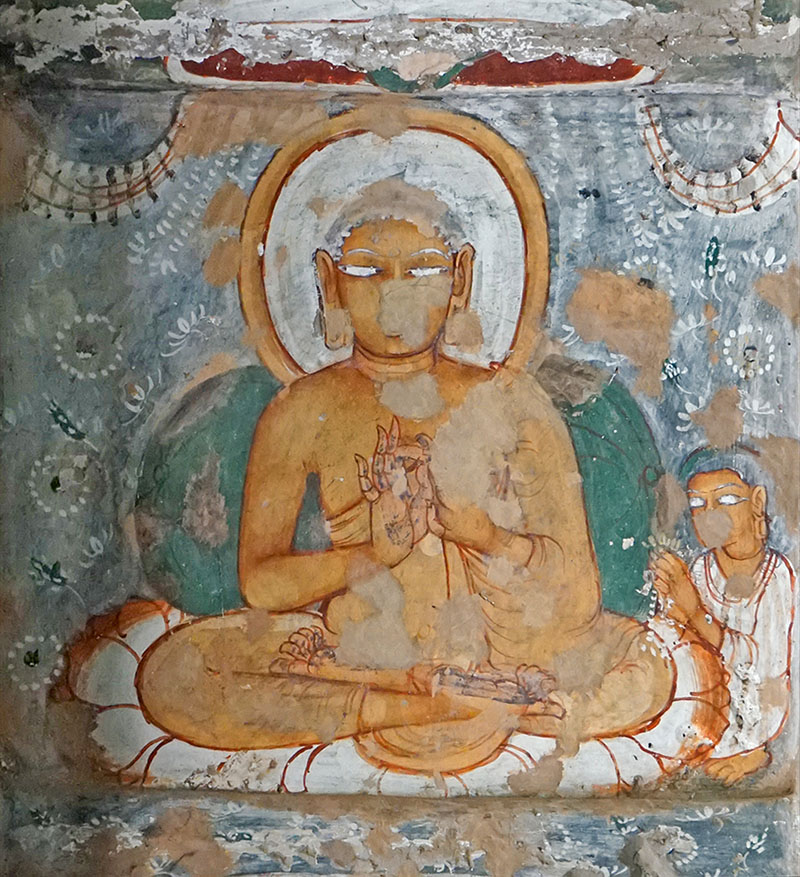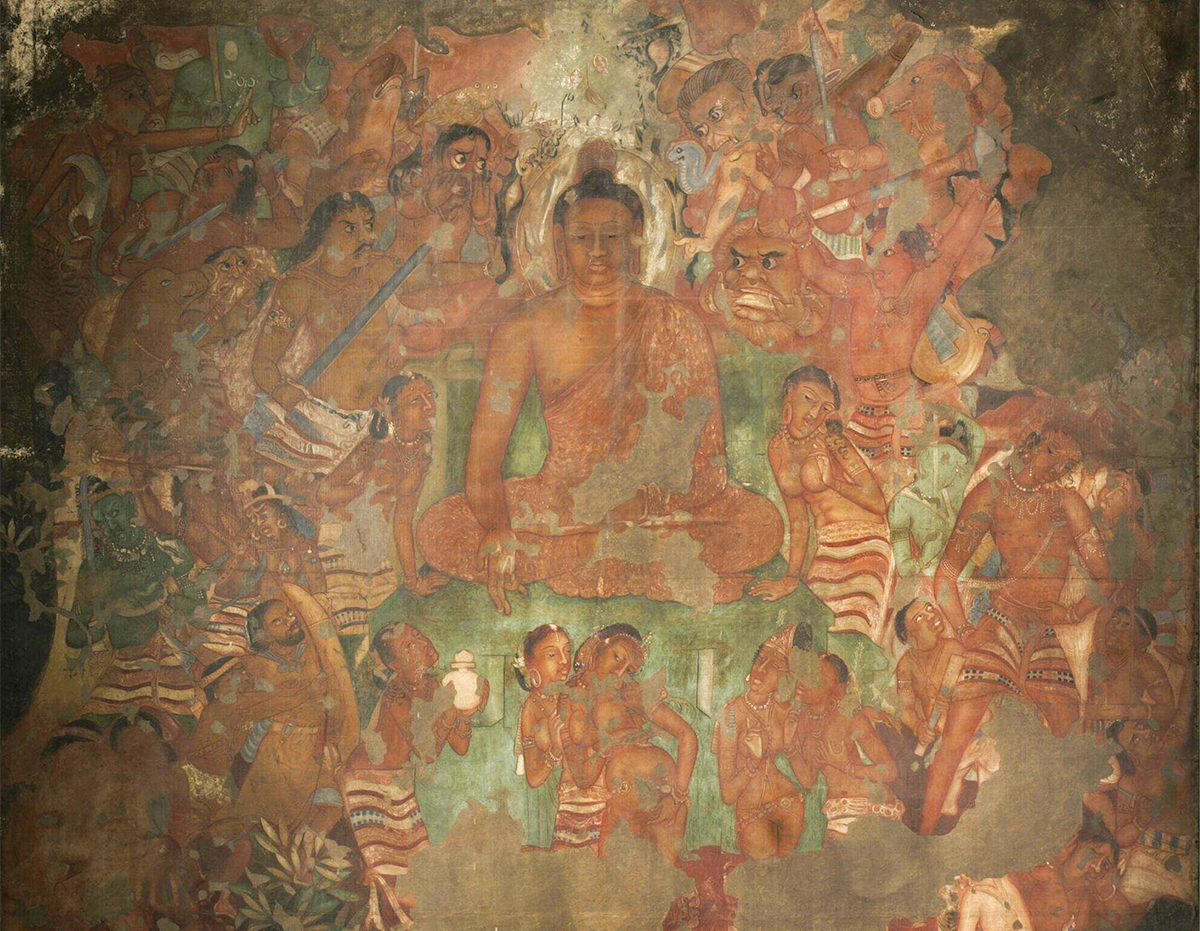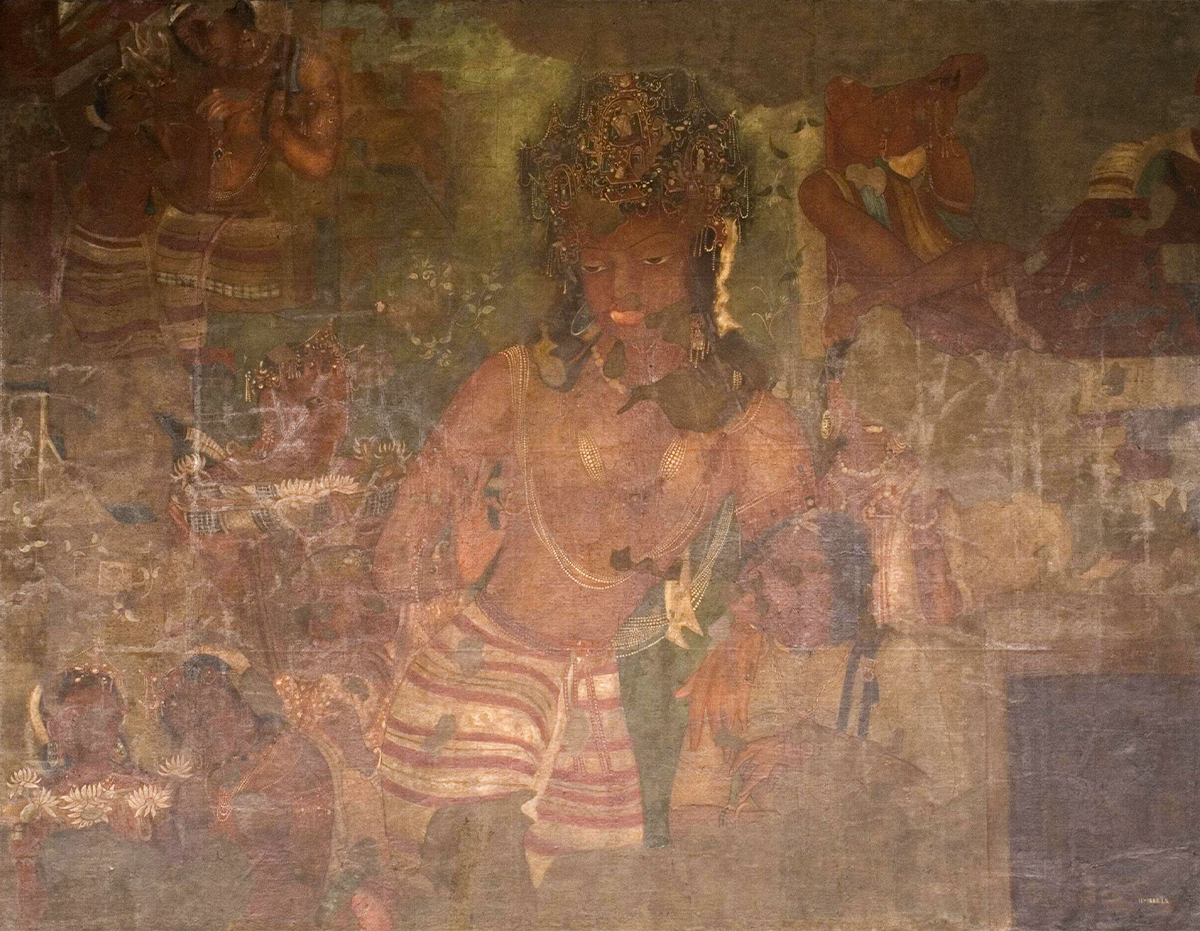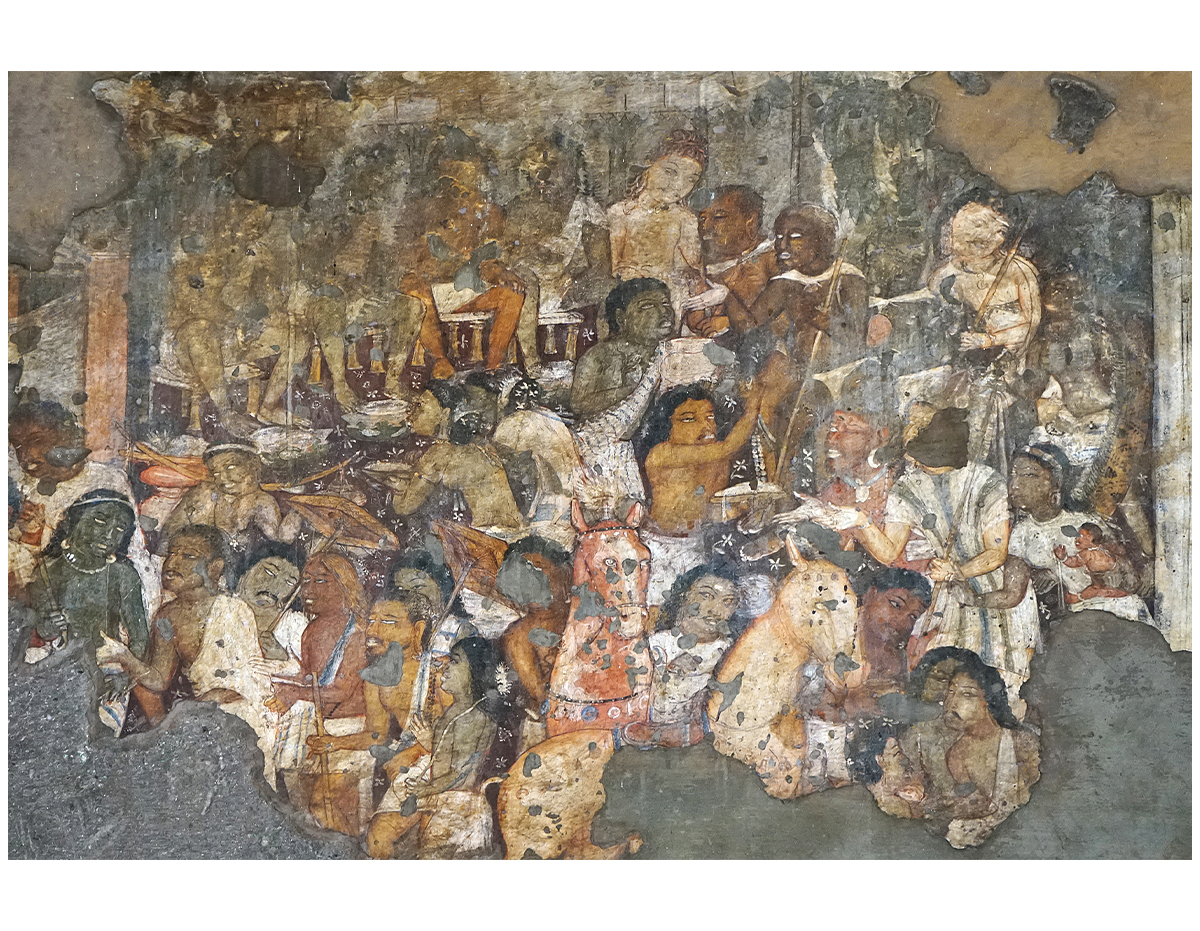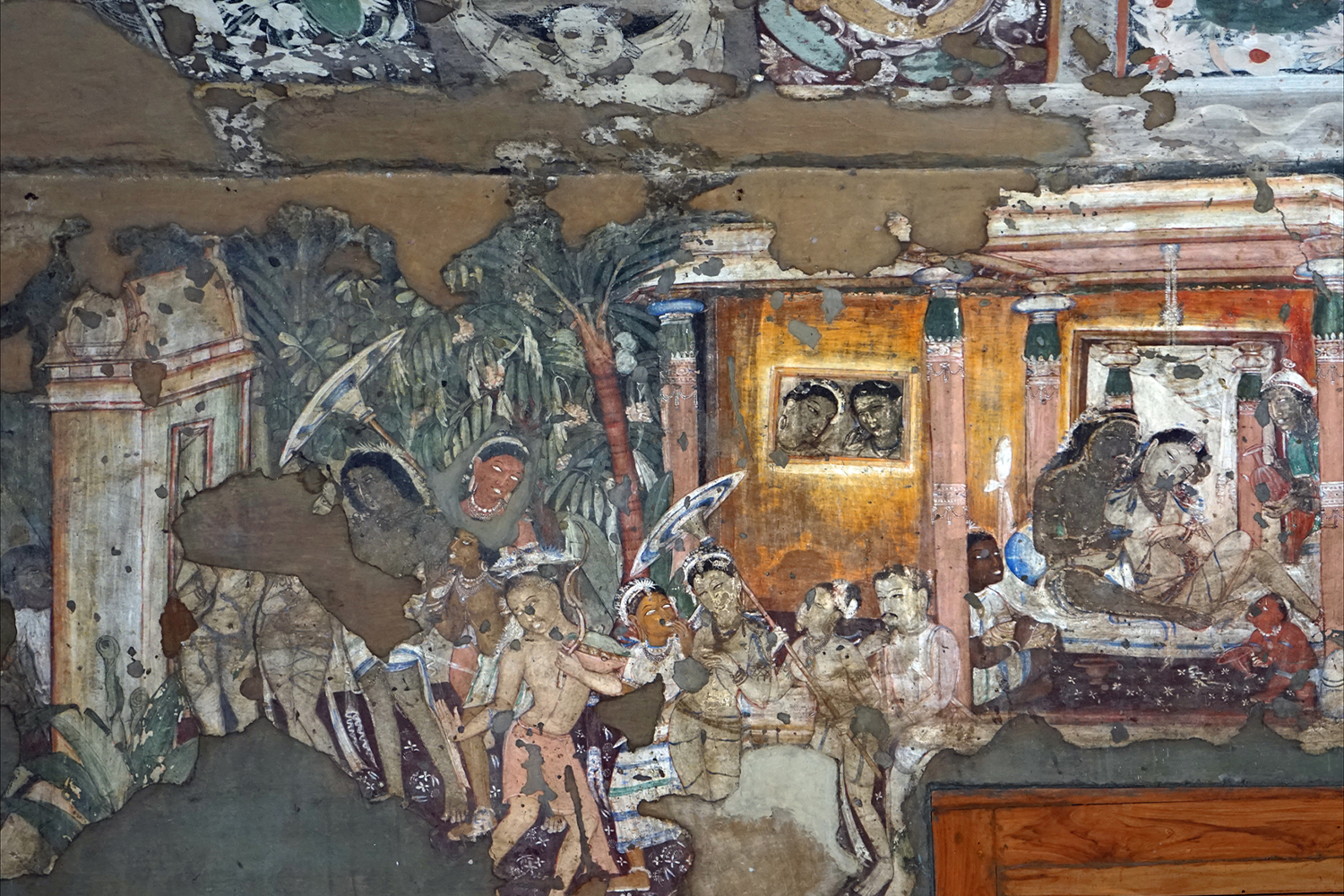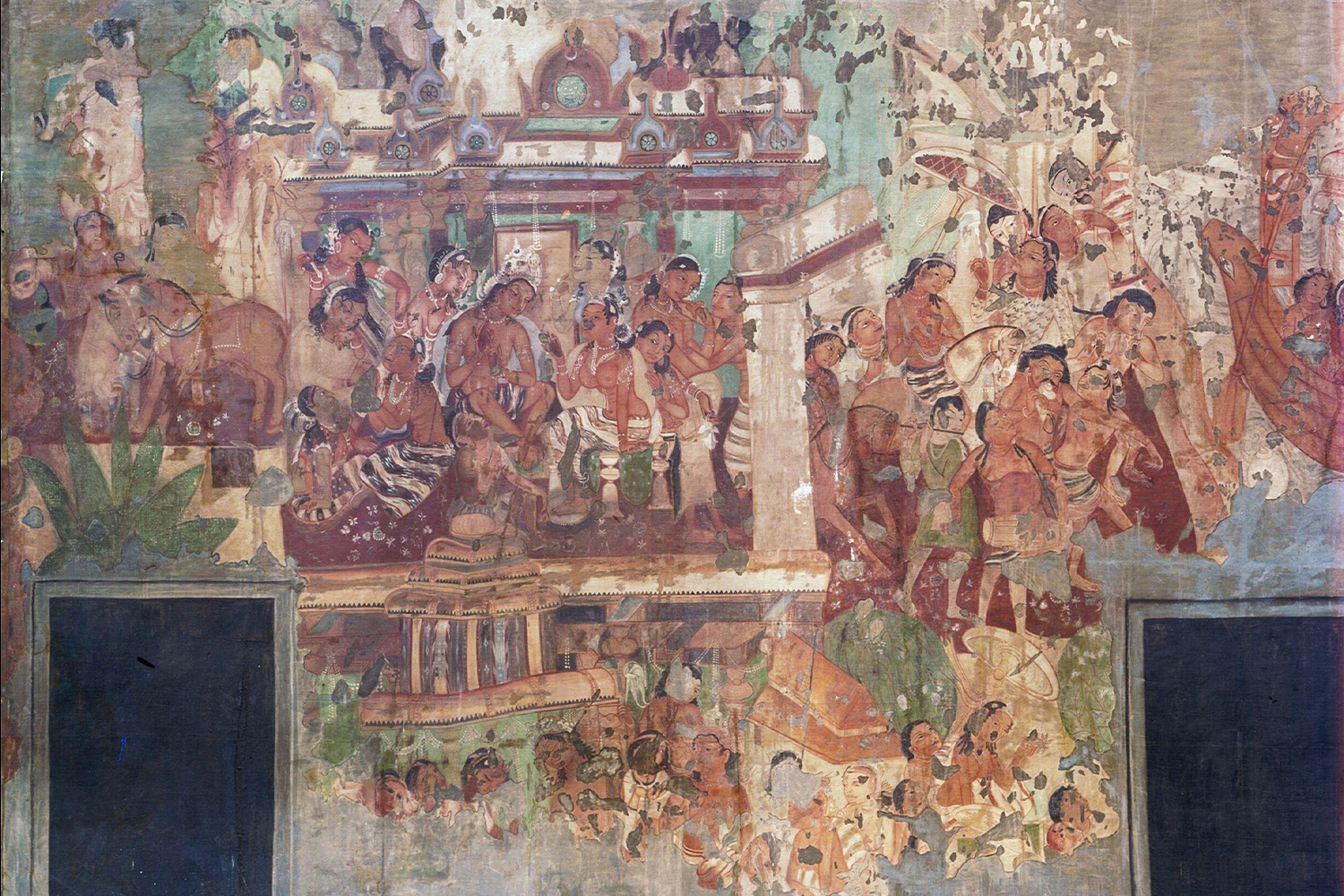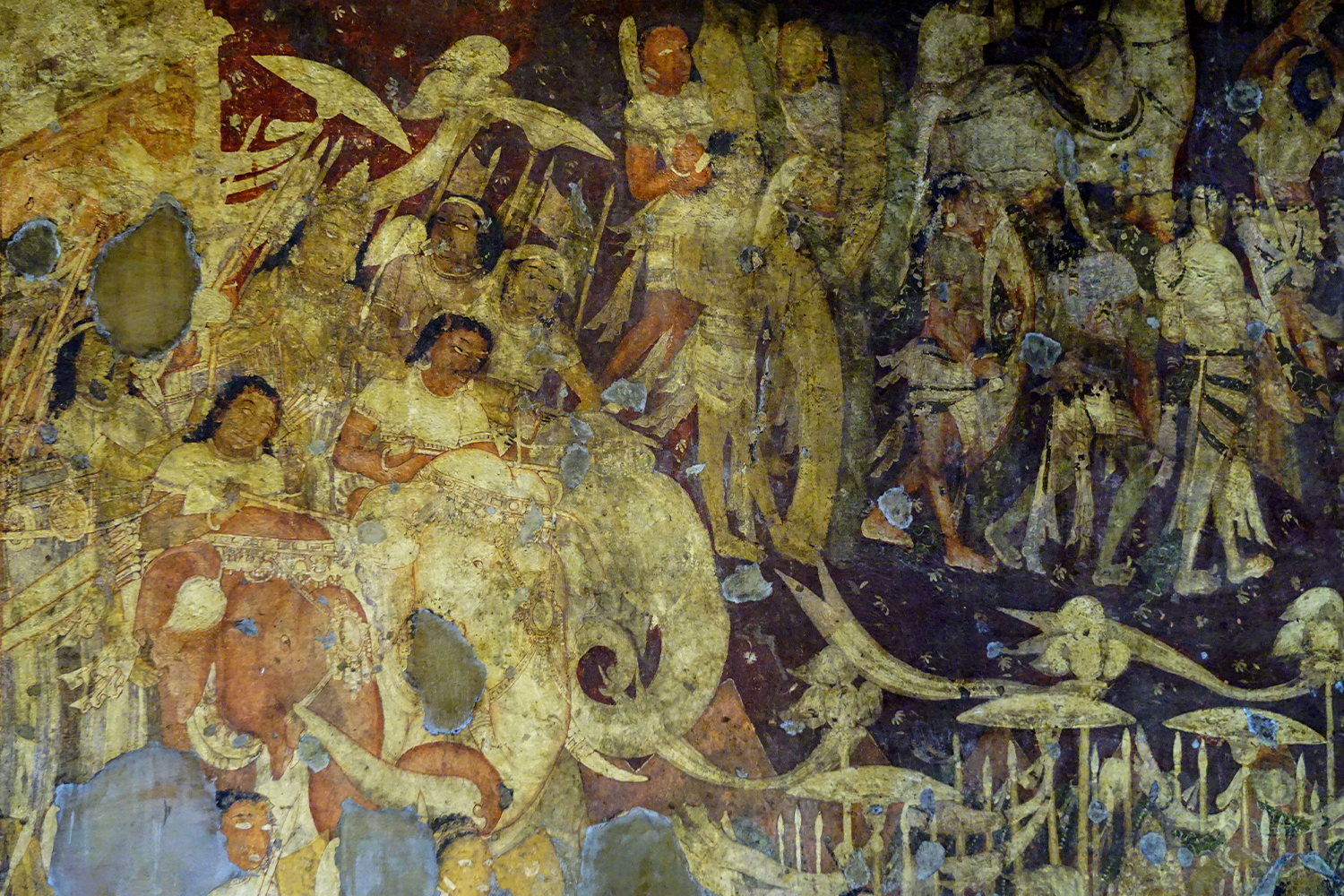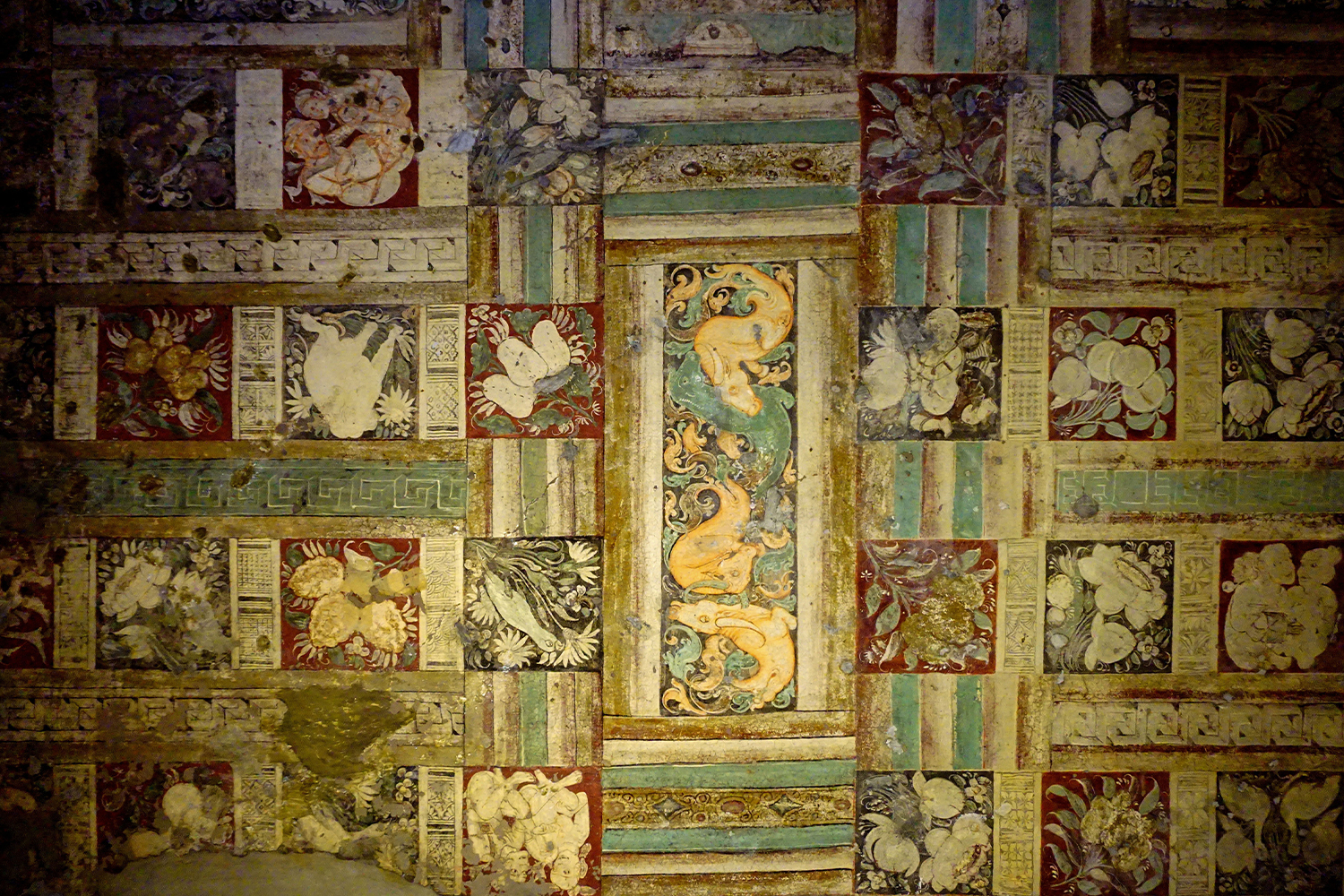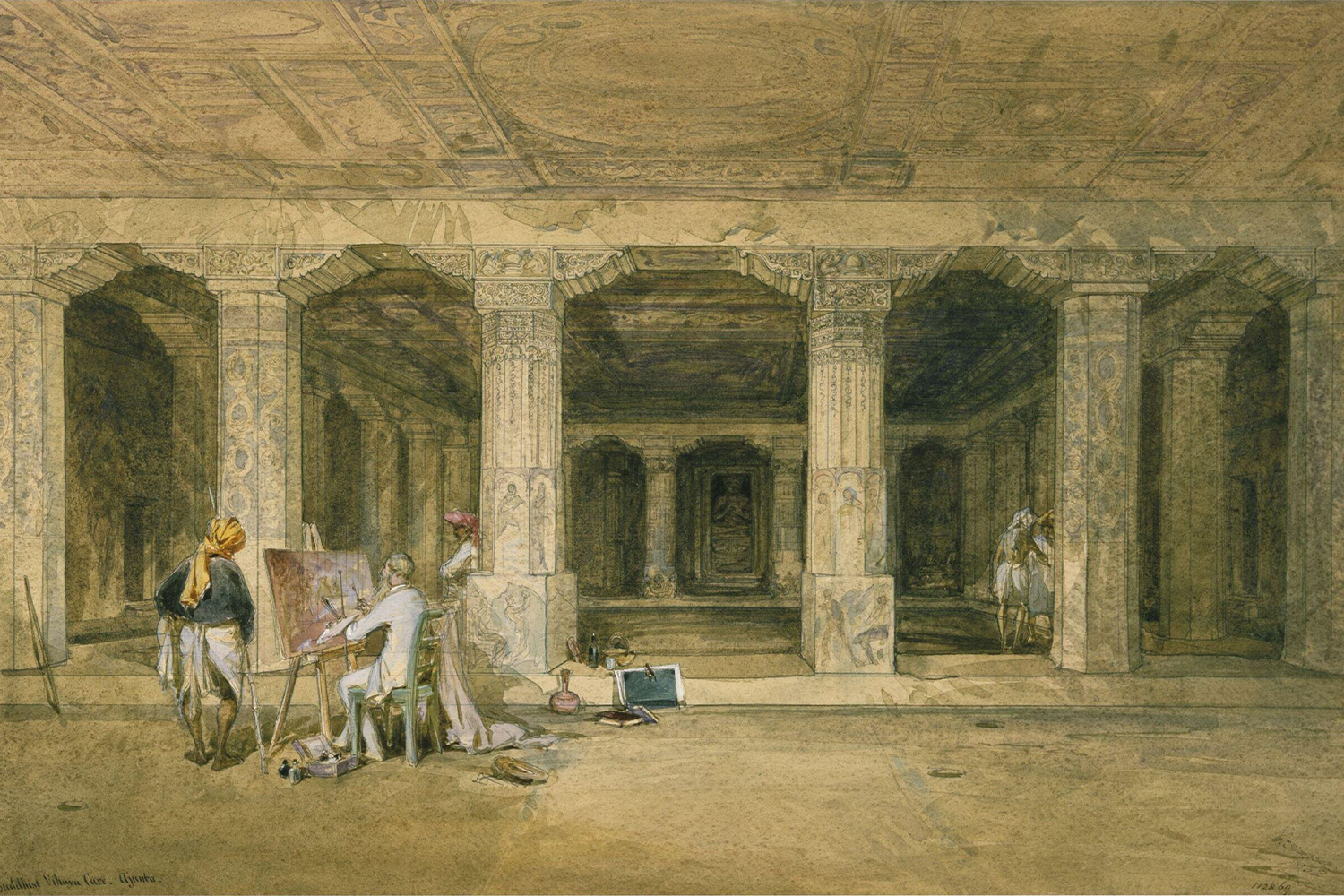ARTICLE
Ajanta Murals
The murals from the first phase use a limited range of colours, mostly confined to different shades of ochre, whereas those from the second phase use a rich mosaic of colours consisting of yellow, red, white, black and green. The pigments are believed to have been sourced locally from residual minerals of volcanic rocks. However, the occasional use of lapis lazuli for blue suggests that at least some pigments may have been imported from the Iranian plateau. The layer of paint in the murals measures 0.1 millimetre in thickness, with the underlying layer of fine plaster varying from cave to cave but generally ranging between 2 and 3 millimetres.
While there is considerable dispute about whether the murals were made using tempera or fresco secco, there is general agreement on the fact that they are not fresco buono, where the painting is done on wet plaster. It is widely accepted that a mud plaster – made by combining water, rock-grit or sand and organic matter such as vegetable fibres, paddy husk, grass and other organic fibrous material – was first applied to the compact volcanic basalt walls of the caves to form the foundation of the paintings.
The murals are believed to have been made mostly by families that functioned as individual guilds engaged in painting. It is possible that, in some cases, the monks who resided in the monastery of the Ajanta caves supervised the production of the murals.
The visual style of the murals is highly sophisticated. Outlines are bold and elegant; compositions are full of activity and detail; and human figures are stylised, often ornately decorated with clothing or jewellery, sensitively shaded and provided with emotive facial expressions. The Ajanta artists’ style of depicting elongated eyes and dynamic hand gestures is considered to be highly influential in the history of world art: it has been linked to mural paintings in Central Asia and manuscript paintings in China and Japan.
The Ajanta murals frequently depict scenes from daily life. Women are usually portrayed in traditional roles, such as those of a mother or wife. They are are depicted with shapely bodies, generally in the tribhanga posture, wherein the body is composed around three main axes. In contrast, men are generally portrayed as saintly or ascetic.
Historians believe that the caves were in use until at least the eighth century CE, after which they were abandoned. They were rediscovered in 1819, overgrown with vegetation and filled with debris, by a British officer named John Smith, during a tiger-hunt in the region. The preservation of the murals has been an ongoing challenge ever since this rediscovery. Both environmental and human agents have been responsible for their deterioration, including wide fluctuations in temperature and humidity, atmospheric pollution and vandalism. Older techniques of preservation used in the colonial period, such as the use of unbleached shellac and Victorian varnish, caused considerable damage to the murals. The Archaeological Survey of India undertook an advanced chemical cleaning and preservation and restoration of the murals in 1999. These efforts removed the layers of dirt, grime and shellac and secured the crumbling edges of broken plaster by filleting, so that the original compositions were not altered.
After their rediscovery, many British drafters, Indian artists and art students documented the murals by reproducing them as paintings. The Royal Asiatic Society in London commissioned some of the first of these painted reproductions in the 1840s, executed by the British painter Major Robert Gill; these were destroyed in a fire two decades later. The Sir JJ School of Art, under the leadership of the British artist John Griffiths, undertook further documentation in the 1870s. Students at the school reproduced the murals, and most were subsequently sent to the then-newly established Victoria and Albert Museum, London. It is in large part due to these reproductions that the Ajanta murals are known around the world today. The museum still possesses 166 of these paintings, which were last displayed in 1955 and have been in storage since. In the 1920, the Indian archaeologist Ghulam Yazdani, appointed by the Nizam of Hyderabad, became the first person to photograph the Ajanta murals.
The Ajanta caves were listed as a UNESCO World Heritage Site in 1983. As of writing, they continue to be a major tourist attraction.
Bibliography
Our website is currently undergoing maintenance and re-design, due to which we have had to take down some of our bibliographies. While these will be re-published shortly, you can request references for specific articles by writing to hellomapacademy@map-india.org.




